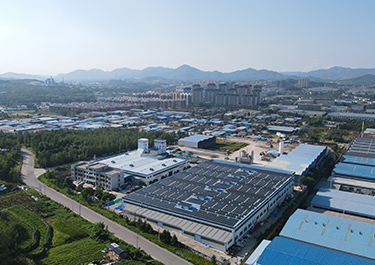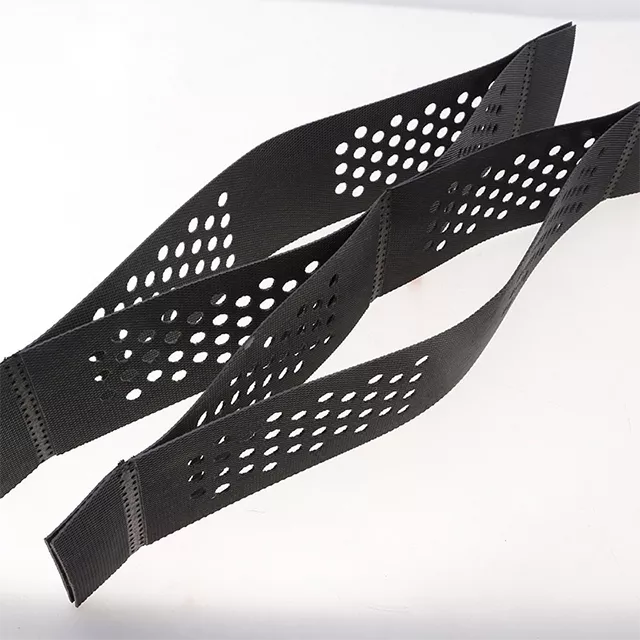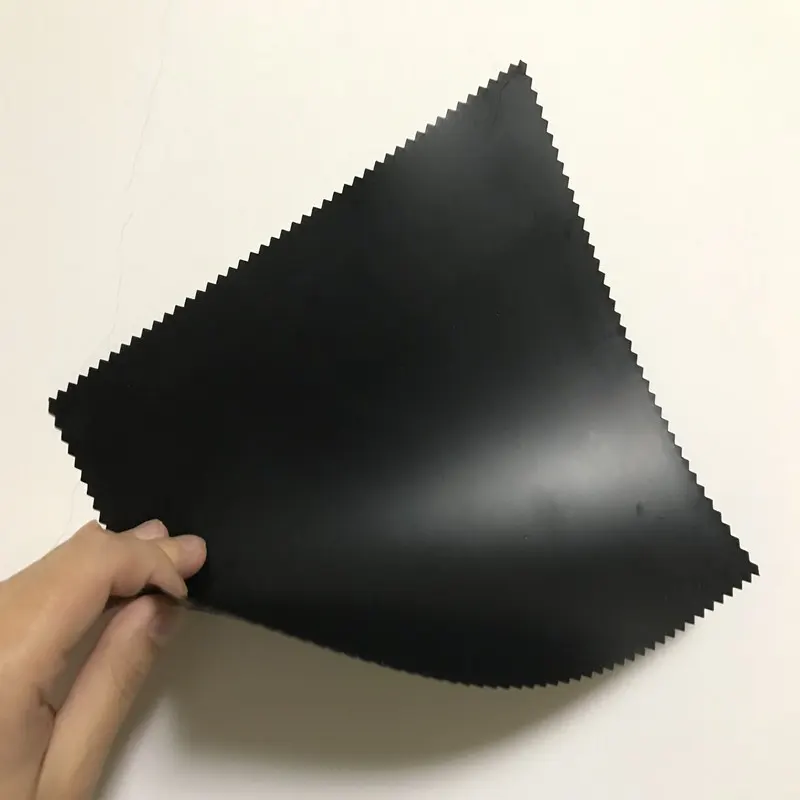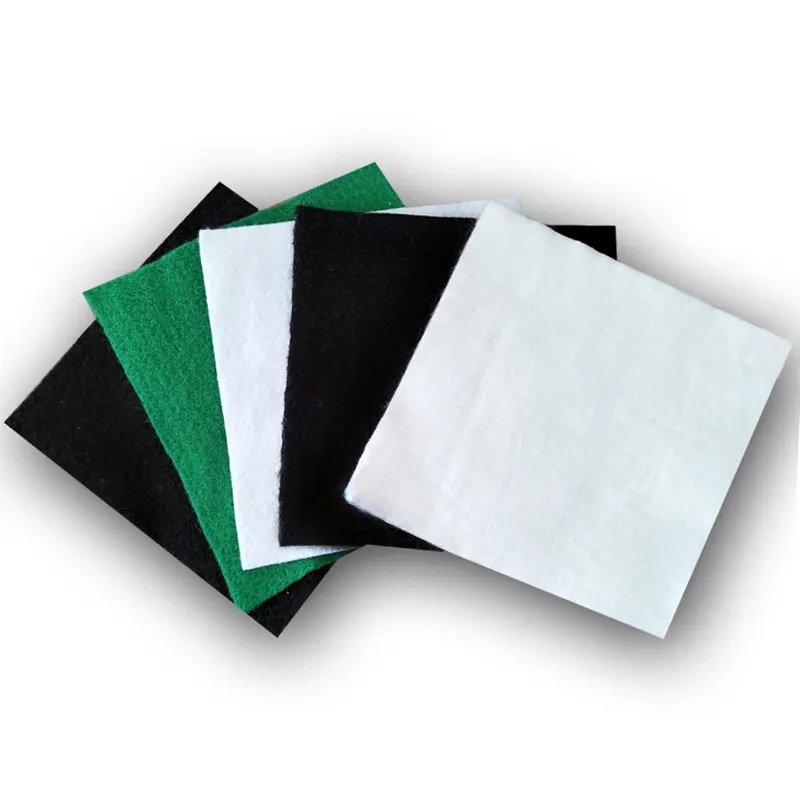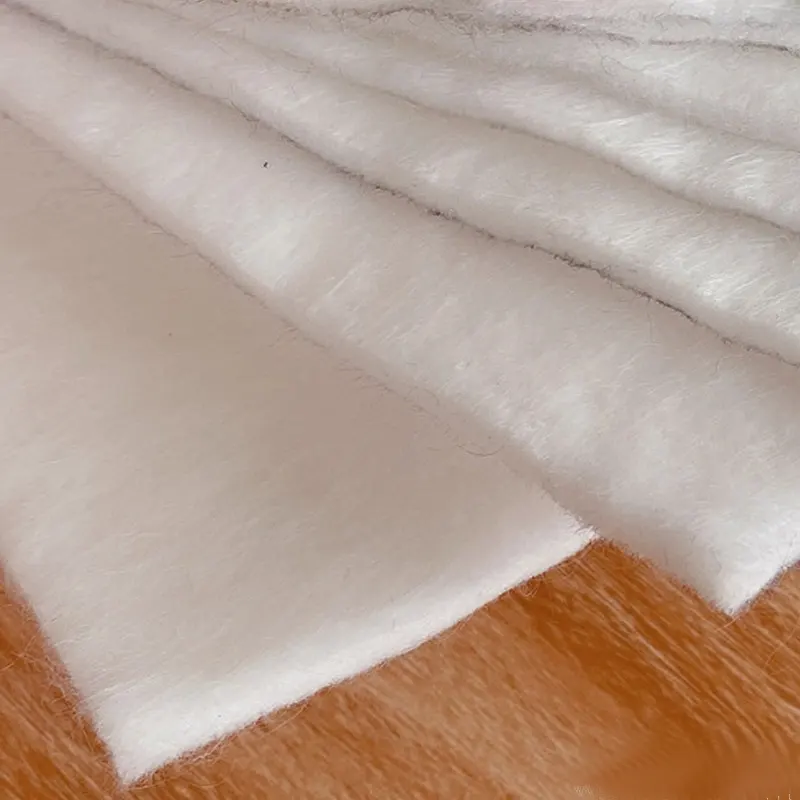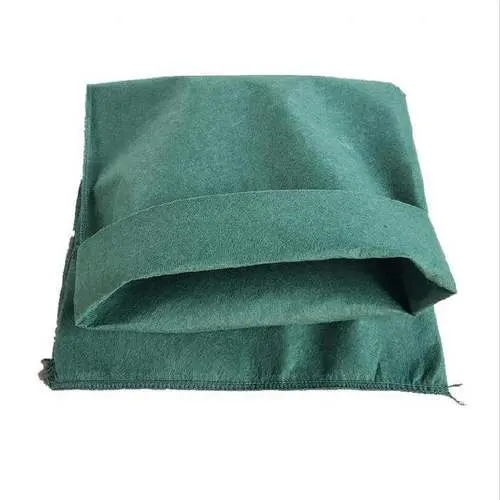Analysis of key factors affecting geomembrane performance
As a core anti-seepage and isolation material, geomembranes are widely used in landfills, water conservancy projects, transportation infrastructure, and other fields. Their performance directly determines the safety and durability of these projects. The key factors affecting geomembrane performance can be broken down into five dimensions: raw material source, production process, construction application, environmental impact, and ongoing maintenance. These factors are interrelated and collectively determine the ultimate performance of geomembranes.
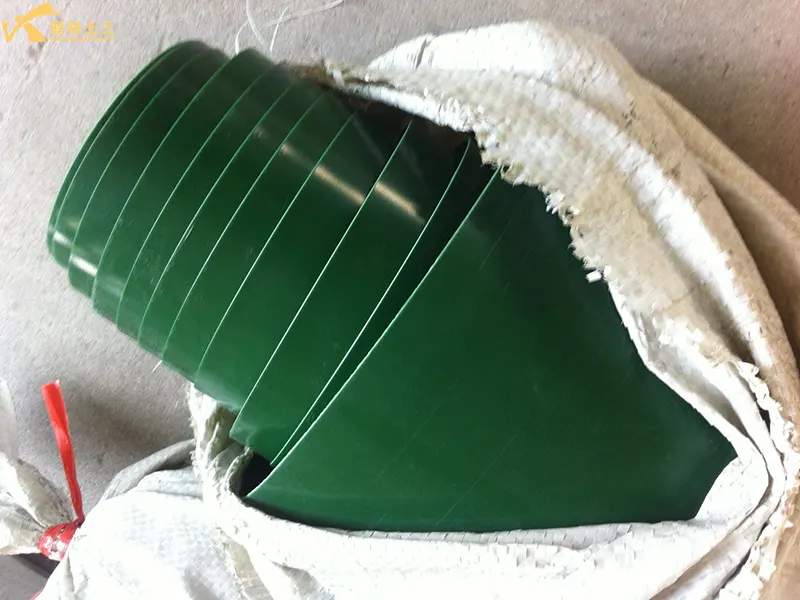
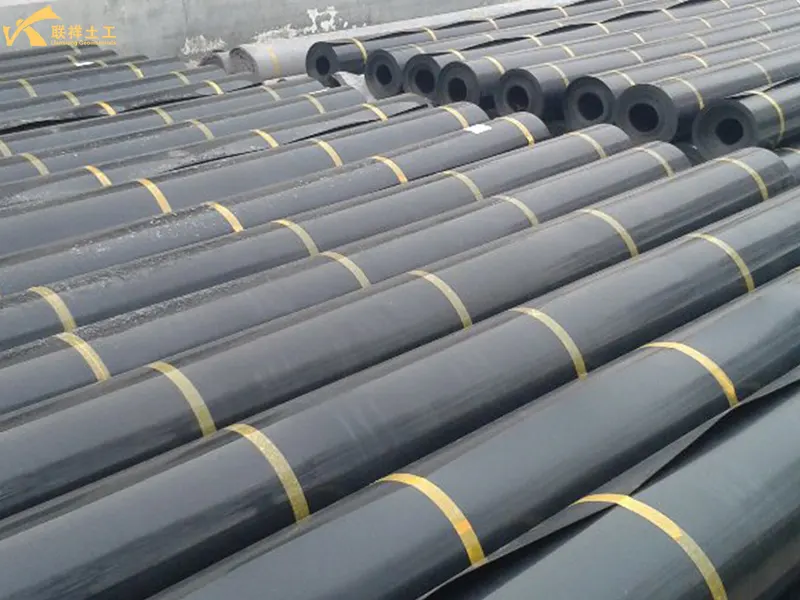
I. Raw Material Factors: The "Innate Foundation" of Performance
Raw materials are the core determinant of geomembrane performance. Their type, purity, and additive ratio directly impact key geomembrane indicators such as mechanical strength, anti-seepage properties, and aging resistance.
1. Substrate Type: Determines the "Basic Foundation" of Performance
Geomembranes are primarily based on polymers. Different substrates have significantly different inherent properties, so the choice should be based on project requirements:
| Substrate Type | Core Characteristics | Applicable Scenarios | Performance Shortcomings |
| High-Density Polyethylene (HDPE) | High tensile strength, strong chemical resistance, and good impermeability | Landfills, chemical impermeability projects | Highly brittle at low temperatures and poor flexibility |
| Low-Density Polyethylene (LDPE) | Good flexibility and excellent low-temperature crack resistance | Slope impermeability, temporary impermeability projects | Low tensile strength and easy to puncture |
| Polyvinyl Chloride (PVC) | Strong weather resistance and easy welding | Roof impermeability, small-scale water conservancy projects | Poor oil resistance and easy softening under long-term high-temperature conditions |
| Ethylene Vinyl Acetate (EVA) | Good elasticity and strong adhesion | Tunnel Waterproofing, Composite Anti-seepage Structure | Weak Aging Resistance, Susceptible to UV Degradation |
2. Raw Material Purity: Avoiding "Performance Shortcomings"
- Impurity Content: If low-molecular-weight polymers or mechanical impurities (such as metal particles and dust) are mixed into the base material, they can create "weak points" within the geomembrane. These impurities can easily lead to stress concentration, reducing tensile strength and tear resistance. Furthermore, impurities can disrupt the continuity of the molecular chain, leading to reduced impermeability (e.g., the formation of micropores).
- Molecular Weight Distribution: The molecular weight distribution of polymers must be uniform (for example, the molecular weight distribution index of HDPE should be controlled between 2 and 5). If the distribution is too broad, the low-molecular-weight fraction will easily degrade under high temperatures or UV exposure, making the geomembrane brittle. Excessive high-molecular-weight fractions will reduce flexibility and increase construction difficulty.
3. Additives: Optimizing Key Performance
To compensate for inherent defects in the base material, functional additives are required. The type and dosage of these additives directly impact the durability of the geomembrane:
- Antioxidants (such as hindered phenols): Inhibit thermal oxidative aging during high-temperature production or long-term use, preventing molecular chain breakage. (For example, HDPE geomembranes require the addition of 0.1%-0.3% antioxidants; otherwise, tensile strength may decrease by over 30% after long-term use.)
- UV stabilizers (such as carbon black and benzotriazoles): Resist UV damage to polymer chains. (For example, in outdoor projects, the elongation at break of HDPE geomembranes without carbon black can decrease by 50% after one year of exposure. Adding 2%-3% carbon black can extend weather resistance by 5-8 years.)
- Puncture-resistant agents (such as nano-calcium carbonate): Enhance the geomembrane's resistance to puncture from sharp objects (such as stones and roots), preventing damage to the anti-seepage layer.
- Plasticizers (such as phthalates for PVC): They are only used in flexible substrates like PVC to adjust their flexibility. However, excessive amounts can cause plasticizer migration, which can cause the geomembrane to become hard and brittle after long-term use.
II. Production Process Factors: "Acquired Shaping" of Performance
The production process is the key step in transforming raw materials into qualified geomembranes. The molding method, process parameters, and quality control directly determine the geomembrane's "physical stability" and "performance uniformity."
1. Molding Method: Affects Structural and Performance Uniformity
The mainstream molding processes for geomembranes include blow molding, calendering, and cast extrusion. The effects of these different methods on performance vary significantly:
- Blow molding: This method, formed through a "blown film bubble," creates a "biaxially stretched" structure in the geomembrane's molecular chains, resulting in excellent thickness uniformity (error ≤ 5%), more balanced mechanical properties in the longitudinal and transverse directions (tensile strength difference ≤10%), and excellent impermeability (permeability can be as low as below 10-11 cm/s). This is the mainstream process for producing HDPE geomembranes.
- Calendering: This method uses rollers to form the film. It's suitable for flexible substrates such as PVC and EVA. While it produces a smooth surface, the thickness can vary widely (up to 8%-10%). Molecular chains tend to align along the calendering direction, resulting in significant differences in mechanical properties in the longitudinal and transverse directions (transverse tensile strength may be only 60% of that in the longitudinal direction) and prone to cracking in the transverse direction.
- Cast Extrusion: Suitable for thin geomembranes (thickness < 0.5mm). It offers high production efficiency but suffers from poor thickness uniformity and weak puncture resistance, making it suitable only for temporary anti-seepage projects.
2. Process Parameters: Determine Performance Stability
Production parameters such as temperature, pressure, and speed directly affect the crystallinity, density, and defect rate of the geomembrane.
- Extrusion Temperature: Excessively low temperatures can lead to incomplete melting of the substrate, resulting in "unmelted particles" and reduced anti-seepage properties. Excessively high temperatures (e.g., HDPE exceeding 230°C) can cause molecular chain degradation, resulting in a 15%-20% decrease in tensile strength and the formation of bubbles.
- Pulling speed and cooling rate: Excessive pulling speed can lead to thinning of the geomembrane, concentrated tensile stress, and cracking. Excessive cooling speed can cause high crystallinity (over 65%) in substrates like HDPE, increasing brittleness and making them prone to fracture at low temperatures.
- Calendering pressure: Insufficient pressure during calendering can result in low geomembrane density ( < 0.94 g/cm³) and reduced impermeability. Excessive pressure can cause the membrane to become thinner and reduce mechanical strength.
3. Production quality control: Avoiding "hidden defects"
Online inspections during the production process (such as thickness gauges and defect detectors) are key to ensuring performance. If defects such as pinholes, impurities, and thickness deviations are not detected promptly, these hidden problems can escalate during construction or use, leading to impermeability failure (for example, a single 0.1 mm pinhole can cause leakage in an area of 100 m²).
III. Construction and Application Factors: The Key to Performance
The inherent properties of geomembranes can only be translated into effective engineering results through proper construction. Mistakes in construction are the most common cause of geomembrane failure (according to statistics, over 60% of geomembrane project problems are due to improper construction).
1. Foundation Surface Treatment: Avoiding Physical Damage
The foundation surface for geomembrane installation must be flat, free of sharp objects, and free of accumulated water:
- Sharp objects such as gravel (diameter > 5mm), tree roots, and rebar heads on the foundation surface can puncture the geomembrane during installation, creating permanent holes.
- An uneven foundation surface (slope difference > 5%) can lead to localized stress concentration on the geomembrane, making it prone to cracking after long-term use.
- Accumulated water on the foundation surface can cause the geomembrane to separate from the foundation, making welds susceptible to separation.
2. Cutting and Splicing: Determines Overall Waterproofing Performance
Splicing is a core component of geomembrane waterproofing (the quality of splicing directly impacts overall waterproofing effectiveness). Common issues include:
- Welding Process Selection: Hot air welding or extrusion welding are commonly used for HDPE geomembranes. Hot air welding is suitable for thin membranes ( < 2mm), while extrusion welding is suitable for thicker membranes ( > 2mm). Extrusion welding for thin membranes can easily cause melting and perforation due to excessive temperatures. Double-track hot melt welding and extrusion welding are the two main methods. The appropriate process should be selected based on site conditions (such as temperature, humidity, and slope) and material type.
- Welding Parameter Control: The hot air welding temperature (180-220°C), pressure (0.3-0.5 MPa), and speed (1-3 m/min) must match the membrane thickness. Too low a temperature will result in a weak weld (peel strength < 15 N/cm), while too high a temperature can lead to carbonization and brittle cracking of the weld bead. Temperature, pressure, and speed must be precisely controlled. Improper parameters can result in cold welds, over-welding, or burns.
- Cutting Errors: Excessive dimensional deviations during cutting ( > 5cm) can lead to excessive stretching or wrinkling during splicing. Stretching can cause residual stress in the membrane (making it prone to cracking over time), while wrinkling can lead to discontinuous welds (creating leakage paths).
- Quality Inspection: All welds must undergo 100% non-destructive testing (such as air pressure testing and vacuum chamber testing) and random destructive testing.
3. Laying and Protection: Avoiding "Construction Damage"
- Laying Tension: Appropriate tension must be maintained during geomembrane laying (HDPE membrane tension should be controlled between 10-15N/m). Too little tension will cause wrinkling (impacting waterproofing), while too much tension will prematurely stress the membrane (making it susceptible to fracture due to foundation settlement later).
- Temporary Protection: After laying and before covering, the membrane must be protected from direct sunlight (UV exposure for >24 hours can reduce the tensile strength of HDPE membrane by 10%) and from foot traffic (traffic can easily cause localized wear). During covering, cushioning materials such as non-woven fabrics should be used to prevent direct impact from debris in the backfill. During the laying and welding process, mechanical rolling, personnel trampling, and dropped tools can all damage the geomembrane. Strict site management and the use of protective layers (such as non-woven geotextiles) are crucial.
4. Environmental stress cracking
This is a unique and most dangerous long-term failure mode for HDPE geomembranes. It occurs when the material undergoes brittle cracking over time under stresses below its short-term strength in specific environments (such as the presence of surfactants or oxidants).
- Influencing factors include resin quality, carbon black dispersion, residual stresses during production, and scratches and stress concentrations caused by on-site installation.
5. Overburden and loads
Overburden materials such as garbage, water, and earth and rock can impose static and dynamic loads on the geomembrane.
- Puncture resistance: Sharp debris or debris can puncture the geomembrane under pressure. This requires the geomembrane to have sufficient thickness and puncture resistance, or the use of a protective layer such as a geocomposite mat (GCL).
- Long-term creep: Under long-term loads, geomembranes will experience creep deformation. Improper design can lead to excessive deformation or even failure.
6. Environmental Exposure
- UV: For geomembranes exposed to the elements (e.g., before covering), UV rays are a primary aging factor. The quality and content of carbon black directly determine their aging resistance.
- Chemicals: Geomembranes must withstand the liquids or gases they come into contact with (e.g., leachate, acid and alkali solutions, oil and gas). HDPE has a wide range of chemical resistance, but this still requires evaluation based on the specific project environment.
IV. Environmental Factors: The "Long-Term Test" of Performance
Geomembranes face complex environmental factors during their service life, which can gradually lead to performance degradation and are a key factor in determining their "service life."
1. Climate Conditions: Accelerated Aging and Degradation
- Ultraviolet (UV) radiation: In outdoor projects, UV radiation can damage the carbon-carbon bonds of polymer chains, leading to "photooxidative degradation" of geomembranes—manifested by surface brittleness, increased cracking, and decreased tensile strength (for example, the tensile strength of HDPE membranes without UV stabilizers can decrease by over 50% after five years of outdoor exposure).
- Temperature Changes: High temperatures (>60°C) can soften geomembranes and reduce their mechanical strength (for example, the tensile strength of PVC membranes can decrease by 30% at high temperatures). Low temperatures ( < -10°C) can increase the brittleness of rigid membranes like HDPE, making them susceptible to fracture due to foundation settlement or external impact.
- Freeze-thaw cycles: In cold regions, if geomembranes contain micropores, water can penetrate, freeze, and expand, widening the pores (causing "freeze-thaw damage") and dramatically reducing their impermeability.
2. Chemical Corrosion: Destroying Structural Stability
Liquids (such as landfill leachate and chemical wastewater) that come into contact with geomembranes can cause chemical corrosion, manifesting as follows:
- Acidic/Alkaline Environments: Strong acids (pH < 3) can damage the molecular chains of HDPE, causing the membrane to swell and reduce its impermeability. Strong bases (pH > 12) can break down the ester bonds of PVC, making the membrane hard and brittle.
- Organic Solvents: Petroleum and diesel can dissolve LDPE and EVA membranes, causing them to soften and lose strength (for example, LDPE membranes exposed to diesel can experience an 80% decrease in tensile strength within 24 hours).
- Heavy Metal Ions: Chromium and lead ions react with geomembrane additives (such as antioxidants), depleting the anti-aging components and accelerating membrane aging.
3. Biological Action and Physical Wear
- Biological Penetration: In water conservancy projects, the roots of aquatic plants (such as reeds) and earthworms can penetrate geomembranes (root penetration can exceed 0.5 MPa), creating seepage channels. In landfills, microorganisms can decompose the low-molecular-weight components of geomembranes, causing localized damage.
- Physical Wear: In transportation projects (such as roadbed waterproofing), vehicle loads and filler compaction can cause frictional wear between the geomembrane and the foundation or filler, reducing the membrane thickness (wear >0.2 mm significantly reduces strength).
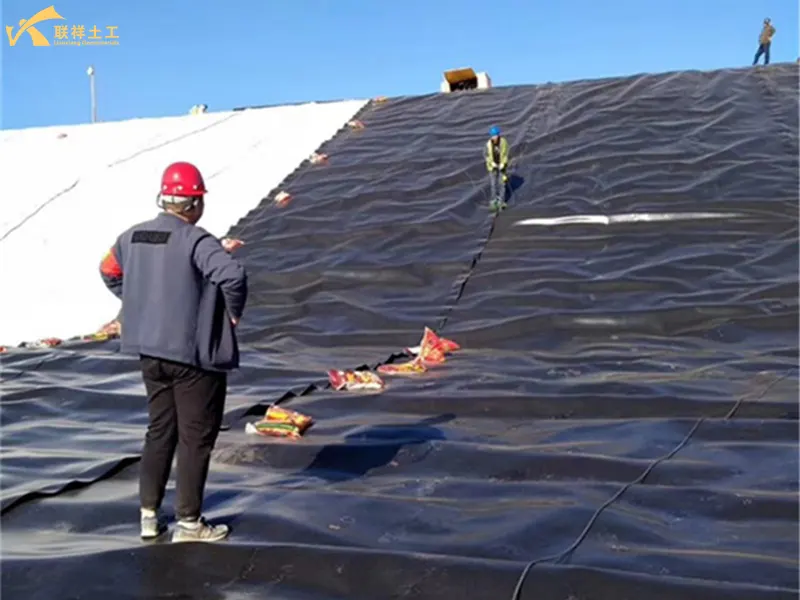
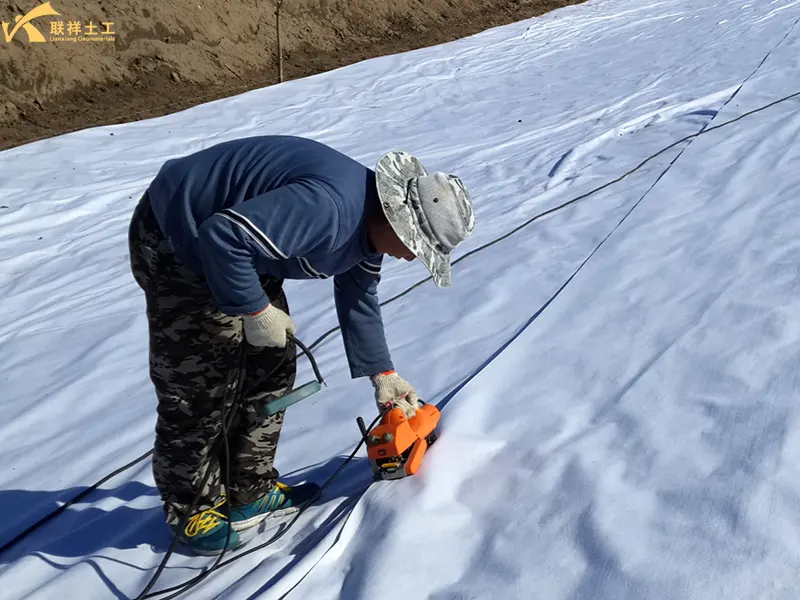
V. Post-Maintenance and Aging Factors: "Continuous Guarantee" of Performance
Geomembrane performance degradation is a long-term process. Improper post-maintenance can accelerate performance failure and shorten service life.
1. Aging Types: The "Internal Mechanism" of Performance Degradation
Geomembranes experience three main types of aging, which reinforce each other:
- Thermooxidative aging: The combined effects of temperature and oxygen cause molecular chain breakage (for example, temperatures under landfill cover exceeding 40°C accelerate the thermooxidative aging rate of HDPE membranes by 2-3 times);
- Hydrolytic aging: In humid environments, the ester and ether bonds in the polymer chain undergo hydrolysis and breakage (for example, the elongation at break of EVA membranes can decrease by 40% in long-term humid conditions);
- Stress aging: Residual stress from construction or stress from foundation settlement accelerates molecular chain fatigue fracture (for example, excessively tensile stress on HDPE membranes can shorten their stress aging life by 50%).
2. Maintenance Measures: Delaying Performance Degradation
- Regular Inspection: Use vacuum testing and water pressure testing to identify leaks (e.g., landfills require quarterly inspections). Any damage detected must be promptly repaired with a geomembrane of the same material (the repair area must be at least 10 times larger than the damaged area).
- Covering and Protection: Outdoor projects require the use of non-woven fabric or soil cover (>30cm thick) to protect against UV rays and physical wear.
- Avoid Overloading: The load on the roadbed or landfill roof must be controlled (≤20kPa) to prevent the geomembrane from excessive compression and fracture.
Conclusion: The Synergistic Influence of Key Factors
Geomembrane performance is the result of a comprehensive combination of "the inherent properties of the raw materials + production process control + construction quality assurance + environmental adaptability + ongoing maintenance":
- If the raw materials are not pure enough, even the most sophisticated production process will result in performance shortcomings;
- If the construction and splicing are improper, even the best geomembrane will fail due to leakage;
- If environmental effects and ongoing maintenance are neglected, the service life of the geomembrane will be significantly shortened (for example, the lifespan of an unprotected HDPE membrane is only 5-8 years, while with proper maintenance, it can be extended to over 20 years).
Therefore, key factors must be controlled throughout the entire "source to end" engineering chain. Comprehensive control must be exercised across four key aspects: material selection, production quality control, meticulous design and construction, and ongoing maintenance and aging factors. Negligence in any one link can lead to the failure of the entire anti-seepage system.
Written by
SHANDONG LIANXIANG ENGINEERING MATERIALS CO., LTD.
Editor Fan
WhatsApp:+86 139 5480 7766
Email:admin@lianxiangcn.com
Contact
-
WhatsApp
-
E-MailE-Mail:admin@lianxiangcn.com
-
WeChatWeChat:18554180188

